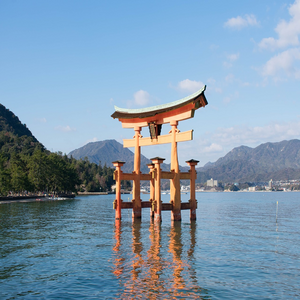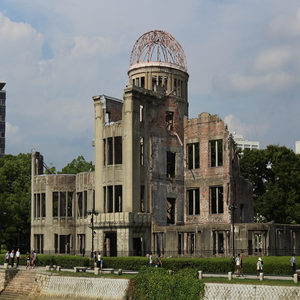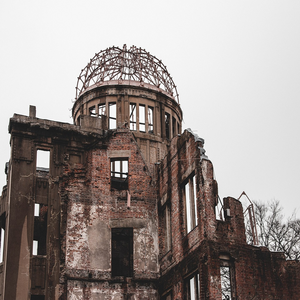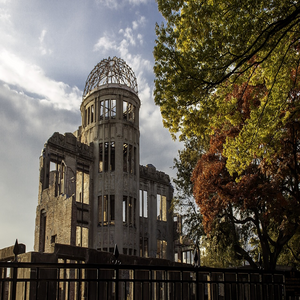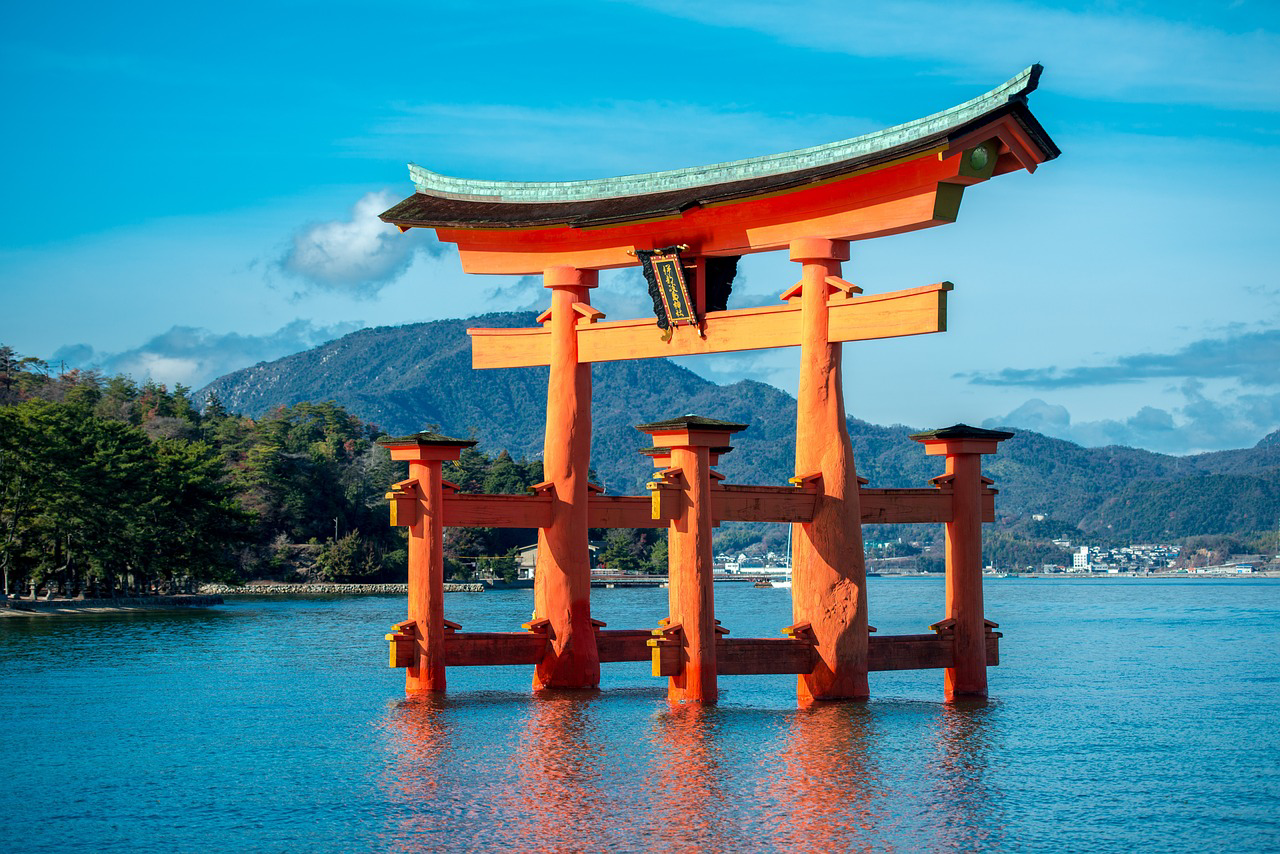
Hiroshima Attractions
Introduction: Nestled in the western part of Japan’s Honshu Island, Hiroshima stands as a resilient city, carrying a profound history while embracing a modern and vibrant atmosphere. Known globally for the tragic events of August 6, 1945, Hiroshima has remarkably transformed into a symbol of peace and resilience. Getting There: Hiroshima is accessible via various means of transportation. Visitors often arrive by air through Hiroshima Airport or by shinkansen (bullet train) on the Sanyo Shinkansen Line, which connects major cities like Tokyo and Osaka. Local trains and buses efficiently navigate within the city. Accommodation: Hiroshima offers diverse accommodation options catering to various budgets. Visitors can choose from luxury hotels with picturesque city views to cozy guesthouses and traditional ryokans, providing an authentic Japanese stay experience. Sightseeing: Peace Memorial Park and Museum: Commemorating the atomic bombing, the Peace Memorial Park is a poignant tribute to the victims. The museum educates visitors about the devastating impact and advocates for global peace. Hiroshima Castle: A striking symbol of resilience, the reconstructed castle allows visitors to explore its history through artifacts and enjoy panoramic views of the city. Miyajima Island: A short ferry ride away, this island houses the iconic Itsukushima Shrine with its famous floating torii gate, a UNESCO World Heritage Site. Cuisine: Hiroshima boasts a distinct culinary identity. Okonomiyaki, a savory pancake layered with ingredients like cabbage, noodles, and meat or seafood, is a must-try. Visitors can indulge in local delicacies at Okonomimura, a multi-story building dedicated to this dish. Day Trips: Miyajima Island: Beyond the shrine, Miyajima offers hiking trails, scenic spots, and local shops selling delectable snacks like maple leaf-shaped cakes. Sandankyo Gorge: Nature enthusiasts can explore this scenic gorge, enjoying its hiking trails, waterfalls, and breathtaking landscapes. Shopping: Hiroshima offers a range of shopping experiences, from bustling shopping streets like Hondori to specialized markets offering local crafts, ceramics, and Hiroshima’s distinctive oysters and sake. Conclusion: With its blend of history, culture, and natural beauty, Hiroshima warmly welcomes visitors to experience its resilience, vibrant city life, and serene surroundings. A visit to Hiroshima is not just a journey through time but an exploration of hope, peace, and the triumph of the human spirit.

0$
0$
3000$

Price From
$166.10
This value-packed trip with a licensed and experienced English-speaking tour guide is a fantastic and efficient way to explore both Hiroshima and Miyajima!
To start your day, meet your tour guide at your hotel, then visit famous sites such as Miyajima, Itsukushima Shrine, Hiroshima Peace Memorial Park, Shukkeien Japanese garden, and Hiroshima Castle. Your guide will customize your private tour in detail according to your interests.
Seven-hours is the perfect amount of time to check out both Hiroshima and Miyajima island. We strongly suggest visiting both places when you come to this part of Japan.
24 Pass for Ferry and streetcar transportation is 900 Yen for adults, 450 yen for children.
Note*1: Please select your must-see spots from a list in the tour information to create your customized itinerary.

Price From
$115.93
This tour is accompanied by a National Government Licensed English Guide Interpreter. Visit the World Heritage Sites of Itsukushima Shrine on Miyajima and Hiroshima's Atomic Bomb Dome on this leisurely tour. Visit the Main Building of the Hiroshima Peace Memorial Museum, which was newly reopened after renovations in April 2019. Look forward to seeing wild deer in the untouched abundant nature of Miyajima. Please book this Hiroshima round-trip tour if you have a JR Pass.
Learn More
Price From
$67.80
Explore one of the world's most iconic cities on two wheels with a small group of travellers and a knowledgable English speaking guide. Pedalling the streets and riverside paths of Hiroshima on top quality 'Trek' bikes, we will take in Hiroshima's infamous past at the Peace Park and Atomic Bomb Dome, as well as discovering the Hiroshima of today, a relaxed and forward looking city full of great people, great food and a great cycling infrastructure!
Learn More
Price From
$52.20
【Outline】
This is a cycling guided tour in which participants ride an electric bicycle and hear the story of the reconstruction of the bombed heritage sites and how we are trying to protect peace in the city of Hiroshima. The tour is led by a friendly team from Hiroshima.
【Highlights】
・Learn about local feelings towards the Peace Park from about 70 years ago.
・The area within a 2.5km radius from the hypocenter was severely damaged. We are heading to multiple bombed heritage sites that still remain.
・You will ride a comfortable electric bicycle to the local area, which is not only known for the Hiroshima Peace Museum.
・We will take you to unique places well-known by the local Japanese team.
・We will ride along the beautiful riverside and in the park to get an idea of the destruction of Hiroshima at that time and how it has changed into what it is now.

Price From
$81.36
【Let's Get Insights into the History of Hiroshima】
Our tour guide will take visitors on a tour through the Hiroshima Peace Memorial Museum. Here, they will learn the horrors of the atomic bomb as well as how the people of Hiroshima coped with the tragedy.
【Past to present, your local guide will show you how life was like after the atomic bomb impact compared to Hiroshima today】
Let's go up to the Orizuru Tower's observatory area. You can get almost of the whole view of the Hiroshima city.
【Enjoy a spectacular view of Hiroshima while eating lunch and reminisce the past and present of this beautiful city】
Have lunch with the guide and also go see the Aogiri tree and the Atomic Bomb Dome, learn more about Japanese life and feel the revival of the city.
Magical Trip is a local tour operator with the TripAdvisor certificate of excellence that offers various types of small-group tours throughout Japan! Check out our Trip Advisor Page for more tours and our reviews!

Price From
$94.92
Hiroshima is home to the historically significant and moving Peace Memorial and Museum. In the city stands Hiroshima Castle, nicknamed the ‘carp castle’ because of the glistening carp fish residing in the moats. The Shukkei-en Garden captures the beauty of a Japanese style garden in a small space. On this private walking tour with a Government Licensed and Experienced English speaking guides, you will be able to experience these sights without worry. Your guide will also be able to teach you about the history and culture of Hiroshima in a personalized way that you can only achieve with a private guide.
Once your reservation is made, a guide will be in touch to plan out the times and details of your private tour. We are looking forward to sharing with you the history of Hiroshima on our tour!

Price From
$297.63
This tour is accompanied by a National Government Licensed English Guide Interpreter. Visit the World Heritage Sites of Itsukushima Shrine on Miyajima and Hiroshima's Atomic Bomb Dome on this leisurely tour. Visit the Main Building of the Hiroshima Peace Memorial Museum, which was newly reopened after renovations in April 2019. Look forward to seeing wild deer in the untouched abundant nature of Miyajima. Enjoy a comfortable Shinkansen ride between Kyoto and Hiroshima.
Learn More
Price From
$296.27
This tour is accompanied by a National Government Licensed English Guide Interpreter. Visit the World Heritage Sites of Itsukushima Shrine on Miyajima and Hiroshima's Atomic Bomb Dome on this leisurely tour. Visit the Main Building of the Hiroshima Peace Memorial Museum, which was newly reopened after renovations in April 2019. Look forward to seeing wild deer in the untouched abundant nature of Miyajima. Enjoy a comfortable Shinkansen ride between Shin-Osaka and Hiroshima.
Learn More



Price From
$40.68
46 tours and activities
Access for Visually Impaired
Accessibility for wheels
Access for Seniors
For Individuals with Hearing Loss

Price From
$94.92
89 tours and activities
Access for Visually Impaired
Accessibility for wheels
Access for Seniors
For Individuals with Hearing Loss

Price From
$26.78
60 tours and activities
Access for Visually Impaired
Accessibility for wheels
Access for Seniors
For Individuals with Hearing Loss

Price From
$33.90
84 tours and activities
Access for Visually Impaired
Accessibility for wheels
Access for Seniors
For Individuals with Hearing Loss


Hiroshima is a city in Japan that takes pride in making its attractions accessible to people with disabilities and seniors. The local government, along with various organizations and businesses, has implemented several measures to ensure easy access and enjoyable experiences for everyone.
Transportation:
1. Public Transportation: Hiroshima has an extensive public transportation system, including buses, trams, and trains, that are designed to accommodate people with disabilities. Most buses and trams have accessible ramps and designated seating areas.
2. Hiroshima Electric Railway: The Hiroshima Electric Railway offers barrier-free access on all its trams. The trams have low floors, non-slip floors, and priority seating for people with disabilities and seniors.
3. Taxi Services: Hiroshima provides wheelchair-accessible taxis that are equipped with ramps or lifts to accommodate wheelchair users or individuals with limited mobility. These taxis can be found at designated taxi stands or can be booked in advance.
Tourist Attractions:
1. Peace Memorial Park: The Peace Memorial Park is a significant attraction in Hiroshima, and it has been made easily accessible to people with disabilities and seniors. The main paths throughout the park are level and have ramps. Elevators are available in some buildings, and barrier-free restrooms are also provided.
2. Hiroshima Castle: Hiroshima Castle offers barrier-free access to its main keep via ramps and elevators. Wheelchair users can also enjoy the beautifully landscaped surrounding gardens, as they have accessible paths.
3. Hiroshima City Museum of Contemporary Art: This museum is designed to accommodate people with disabilities and seniors. It features barrier-free entrances, elevators for easy access to all floors, and wheelchair rentals.
Accommodation:
1. Accessible Rooms: Many hotels in Hiroshima city offer accessible rooms with amenities specifically designed for people with disabilities and seniors. These rooms have wider doorways, grab bars, accessible bathrooms, and low-height beds.
2. Universal Design: Certain accommodations in Hiroshima have implemented universal design principles, making their facilities accessible to all. This includes features such as step-free entrances, spacious corridors, and accessible common areas.
Other Facilities and Services:
1. Barrier-Free Information: Hiroshima provides information on its official tourism website regarding barrier-free access to various attractions, transportation, and accommodations. This information helps people with disabilities and seniors to plan their visit effectively.
2. Tourist Assistance: The Hiroshima City Barrier-Free Tourist Information Center offers support and assistance to people with disabilities and seniors. They provide information on accessible facilities, transportation, and activities, as well as equipment rentals like wheelchairs and strollers.
Overall, Hiroshima has put significant effort into making its city accessible to people with disabilities and seniors. With accessible transportation options, barrier-free tourist attractions, inclusive accommodations, and various support services, visitors can explore and enjoy the city comfortably and without obstacles.
City Info and Accessibility
Hiroshima is generally considered a safe city for travelers, with low crime rates and a welcoming atmosphere. However, it is always important to take basic safety precautions while traveling, such as being aware of your surroundings, keeping an eye on your belongings, and avoiding any risky situations.
In Hiroshima, the most commonly spoken language is Japanese. While English is not as widely spoken as in some other major cities in Japan, you should be able to find some English speakers, especially in tourist areas, hotels, and restaurants.
The best time to visit Hiroshima is during the spring (March to May) and autumn (September to November) seasons when the weather is mild and comfortable. The famous cherry blossoms bloom in spring, creating a picturesque setting in the city’s parks and gardens. Autumn is also a great time to visit, with beautiful fall foliage and pleasant temperatures for exploring the city and its surrounding areas. Avoid visiting during the hot and humid summer months and the chilly winter season.
 Public Transport Accessibility
7/10
Public Transport Accessibility
7/10
 Airport Accessibility
7/10
Airport Accessibility
7/10
 Common Accessibility
7/10
Common Accessibility
7/10
Hiroshima offers a range of accommodations to suit every budget and preference, from budget hostels to luxury hotels. Here are some of the best areas to stay in Hiroshima:
1. Hiroshima City Center: This area is ideal for those who want to be in the heart of the city, with easy access to shopping, dining, and attractions such as the Peace Memorial Park and Hiroshima Castle.
2. Miyajima Island: If you prefer a more peaceful and picturesque setting, Miyajima Island is a great option. It is known for its iconic floating torii gate at Itsukushima Shrine and offers a quiet escape from the city.
3. Hiroshima Train Station Area: This area is convenient for travelers looking for easy access to transportation links for exploring the city and surrounding areas.
For budget travelers, hostels and guesthouses are widely available in Hiroshima, offering affordable accommodation options with shared facilities. Some popular budget accommodations include J-Hoppers Hiroshima Guesthouse, Santiago Guesthouse Hiroshima, and K’s House Hiroshima.
For those seeking more luxurious options, Hiroshima boasts upscale hotels such as the Sheraton Grand Hiroshima Hotel, Rihga Royal Hotel Hiroshima, and Hotel Granvia Hiroshima, offering top-notch amenities and services.
In terms of accessibility, there are accommodations in Hiroshima that cater to seniors and individuals with disabilities. Many hotels offer wheelchair-accessible rooms, ramps, elevators, and other facilities to ensure a comfortable stay for guests with mobility challenges.
It’s advisable to contact your chosen accommodation directly to inquire about their accessibility features and discuss any specific requirements you may have to ensure a smooth stay in Hiroshima.
Transportation options in Hiroshima include:
1. Airport Transfers:
- Hiroshima Airport is located about 50 minutes by bus from the city center. Airport Limousine buses operate between the airport and various locations in Hiroshima, including Hiroshima Station and Hiroshima Bus Center.
- Taxis are also available at the airport for those who prefer a more direct and convenient transfer to their destination.
2. Public Transport:
- Hiroshima has an extensive public transportation system, which includes buses and streetcars (trams). Both options are convenient and affordable ways to get around the city.
- The Hiroshima Electric Railway, also known as the Hiroden, operates streetcars that cover most parts of the city. The streetcar lines are easy to navigate and connect major attractions and transportation hubs.
- The Hiroshima Bus Center is the city’s main bus terminal, serving various bus routes that connect different areas of Hiroshima and neighboring cities.
3. Senior and Disability Accessible Transportation:
- Hiroshima is known for its accessible public transportation options for seniors and people with disabilities. Many buses and streetcars are equipped with ramps and designated seating areas for those with mobility challenges.
- The Hiroshima Electric Railway also provides support for wheelchair users, including accessible platforms and low-floor trams.
4. Navigating the City:
- Hiroshima is a relatively compact city, making it easy to explore on foot or by bicycle. The Peace Memorial Park, Hiroshima Castle, and other major attractions are within walking distance of each other.
- Google Maps is a useful tool for navigating Hiroshima’s public transportation system, providing real-time updates on bus and streetcar routes.
- Consider purchasing a Hiroshima Tourist Pass, which offers unlimited rides on the Hiroden streetcar network and discounts at various attractions in the city.
Overall, Hiroshima offers a well-connected and accessible transportation system, making it easy for visitors to explore the city’s historic sites, modern attractions, and natural beauty.
1. Hiroshima Peace Memorial Park - This park is built to remember the victims of the atomic bombing of Hiroshima and promote peace. It also has a Children’s Peace Monument dedicated to child victims of the bombing.
2. Hiroshima Castle - Kids can enjoy exploring the historic castle grounds and learning about its history.
3. Shukkeien Garden - A beautiful traditional Japanese garden with ponds, bridges, and teahouses, perfect for a peaceful family stroll.
4. Hiroshima Children’s Museum - A hands-on, interactive museum with exhibits that educate and entertain children on various topics such as science, technology, and nature.
5. Asa Zoological Park - A zoo with a variety of animals, including elephants, giraffes, and pandas, as well as a playground and splash pool for kids.
6. Hiroshima City Asa Cycling Sports Center - Rent bicycles and explore the cycling trails in Asa, a suburb of Hiroshima known for its scenic views and outdoor activities.
7. Mitaki Temple - A peaceful temple surrounded by nature and hiking trails, perfect for a family hike and picnic.
8. Hiroshima City Manga Library - A unique library filled with manga comics for kids and adults to read and enjoy.
9. Hill of the Star - A park with a giant hill shaped like a star, offering panoramic views of Hiroshima city and a great spot for children to play and run around.
10. Hiroshima City Transportation Museum - A museum dedicated to transportation history, featuring old locomotives, cars, and planes that kids can explore and learn about.
Hiroshima is a city rich in cultural experiences, from its historical significance as the site of the atomic bombing in 1945 to its vibrant arts and music scene. One of the must-visit cultural landmarks in Hiroshima is the Peace Memorial Park, which commemorates the victims of the atomic bombing and promotes peace and nuclear disarmament.
Hiroshima also hosts several annual festivals that showcase the city’s rich cultural heritage. One of the most popular festivals is the Hiroshima Flower Festival, held in May, which features colorful parades, music performances, and food stalls. Another highlight is the Hiroshima Peace Memorial Ceremony on August 6th, the anniversary of the atomic bombing, where thousands gather to honor the victims and promote peace.
For those looking to explore hidden gems in Hiroshima, the Shukkeien Garden is a peaceful oasis in the city center, with meticulously landscaped gardens, ponds, and tea houses. The Mazda Museum is also worth a visit for car enthusiasts, offering a glimpse into the history of the famous automobile manufacturer.
In terms of nightlife, Hiroshima has a lively entertainment scene with plenty of bars, izakayas (traditional Japanese pubs), and live music venues to explore. The Nagarekawa district is a popular nightlife area with a wide variety of bars and clubs catering to different tastes.
Overall, Hiroshima offers a diverse range of cultural experiences, festivals, hidden gems, and nightlife options for visitors to enjoy and explore.
1. Budget-friendly: Okonomimura - Located in the heart of Hiroshima, Okonomimura is a must-visit for anyone on a budget. This food court-style eatery offers a wide selection of affordable okonomiyaki (savory pancake) dishes that are cooked right in front of you.
2. Fine dining: Kakiya - If you’re looking for a high-end dining experience in Hiroshima, look no further than Kakiya. This Michelin-starred restaurant specializes in kaki (oysters) and offers a luxurious dining experience with top-notch service.
3. Allergy-friendly: Itamae Sushi Bar - For those with food allergies, Itamae Sushi Bar is a great choice. This sushi bar offers a variety of allergy-friendly options, including gluten-free soy sauce and dishes that can be modified to accommodate dietary restrictions.
4. Dietary-conscious: Organic Table by Lapaz - If you’re looking for healthy and organic dining options in Hiroshima, head to Organic Table by Lapaz. This restaurant offers a variety of vegetarian, vegan, and gluten-free dishes made with fresh, locally sourced ingredients.
1. Currency Exchange: The currency used in Hiroshima is the Japanese Yen (JPY). It is recommended to exchange your currency at airports, banks, or authorized currency exchange offices. Credit cards are widely accepted in major establishments, but it is still advisable to carry some cash for smaller businesses and street vendors.
2. Financial Tips: It is important to inform your bank or credit card company of your travel plans to prevent your cards from being blocked due to suspicious activity. ATMs are widely available in Hiroshima, especially at convenience stores and post offices. Make sure to check with your bank regarding any foreign transaction fees that may apply.
3. Local Laws: In Japan, it is important to follow the local laws and regulations. Some important laws to note include no smoking in public places, such as parks and train stations, and no jaywalking. Drug offenses are taken very seriously in Japan and can result in severe penalties.
4. Customs and Etiquette: When visiting Hiroshima, it is essential to be respectful of the local customs and traditions. Some common customs to keep in mind include bowing as a form of greeting, removing your shoes before entering someone’s home or certain buildings, and avoiding public displays of affection.
5. Safety Advice: Hiroshima is generally a safe city for travelers, but it is always recommended to stay vigilant and be aware of your surroundings. Petty crimes such as pickpocketing can occur in crowded areas, so it is advisable to keep your belongings secure. In case of an emergency, dial 110 for police assistance and 119 for medical emergencies.
6. Language: While English may be spoken in some tourist areas, it is helpful to learn a few basic Japanese phrases to communicate with locals. Politeness is highly valued in Japanese culture, so saying \"Arigatou\" (thank you) and \"Sumimasen\" (excuse me) can go a long way.
7. Public Transportation: Hiroshima has an efficient and extensive public transportation system, including buses and trams, which are convenient ways to navigate the city. Purchase a transportation card or pass for easier access to different modes of transportation.
8. Dress Code: While Hiroshima is a modern city, it is advisable to dress modestly and respectfully when visiting temples, shrines, or more traditional areas. Avoid wearing revealing clothing in these settings to show respect for the local culture.
9. Respect for Peace Memorial Park: When visiting the Hiroshima Peace Memorial Park, which commemorates the victims of the atomic bomb, it is important to show respect and behave appropriately. Avoid loud conversations, take photos respectfully, and follow the park’s rules and guidelines.
10. Environmental Awareness: Japan is known for its dedication to environmental conservation and cleanliness. Always dispose of your trash properly and follow recycling guidelines. Refrain from smoking in non-designated areas and respect the natural surroundings when exploring Hiroshima’s parks and gardens.


